This review page is supported in part by the sponsors whose ad banners are displayed below |
 |
 |
|
 |
When asked about future plans, Franck and Milan want to build a dedicated phono preamp, a CD transport and DAC. Even a super no-compromise speaker system with external crossover is on the wish list. For now we had the Grand Stereo and LiveLine preamp in da crib. Time for the first CD. To stay with Franck’s tastes, the Larry Carlton/Robben Ford live recording from a 2006 Tokyo concert went in the tray. With 650wpc on hand we set the volume to a low display figure, then slowly upped it to a nice level. We must salute how this preamp handled that with an electronic control over usefully small steps of attenuation and a fantastic remote control. Now we gave the Aquarius speakers a nice workout and the system showed amazing dynamic linearity, i.e. continuity with increasing levels. There was no difference in sound when playing at decent neighbor-conscious volumes or blast-out madness. Second was speed. We like fast systems. With two hornspeaker pairs in permanent residence (Avantgarde Acoustic Duo Omega, Arcadian Audio Pnoe), there is plenty of opportunity for direct in-your-face music. Even with inherently ‘slower’ dynamic speakers like the Aquarius, the speed of attacks of Franck’s electronics was phenomenal and the live impression very high.
|
 |
On a very different musical level, the Marianne Mellnäs Cantate Domino recording for Proprius is always a nice trial for any gear. Does the choir consist of separate voices in a believable fashion? Is the soloist surrounded by the choir in 3D or are things flat? Does the huffing and puffing organ sit at realistic height? All these points were ticked off to be a-okay. After this came tango, Serbian fanfare and flamenco, even some ambient fare with electronic infra bass compliments of Mercan Dede. With all these different types of music the LiveLine/Grand Stereo combination not only kept its literal but also musical cool. Transients were fast, brass refused to sweeten to soft copper, strings had bite when asked to. Then there was balance. This must have been the effect of the speed whereby Milan’s circuits processed the musical signal in its entirety. And we do have to return to the word tonality here which felt preserved throughout. Some systems smear the sound of a chord or a complex tone in time. This not only causes the already mentioned smoothing or energetic neutering, it also alters the specific timbre of an instrument.
|
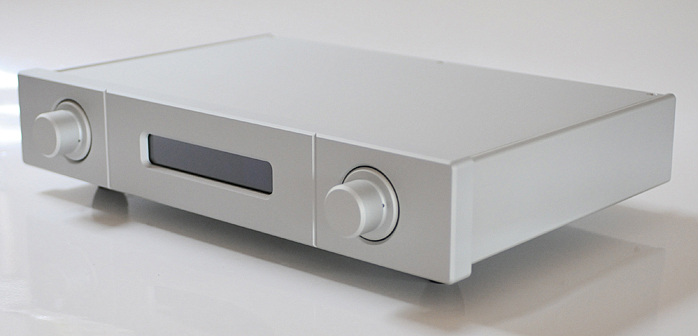 |
|
|
|
|
 |
To assess the capabilities of the ASI gear further, we wanted to connect them to the more sensitive Pnoe horns. Franck’s Tango is around 89dB in sensitivity, the Pnoe 100dB. But how to connect the horns and amplifiers? Hey, the shortest connection between two points is a straight line. So up we went through the floor. Not ideal perhaps but practical and we don’t rent but own. We only needed some long-enough loudspeaker cables and drill a hole in the floor.
|
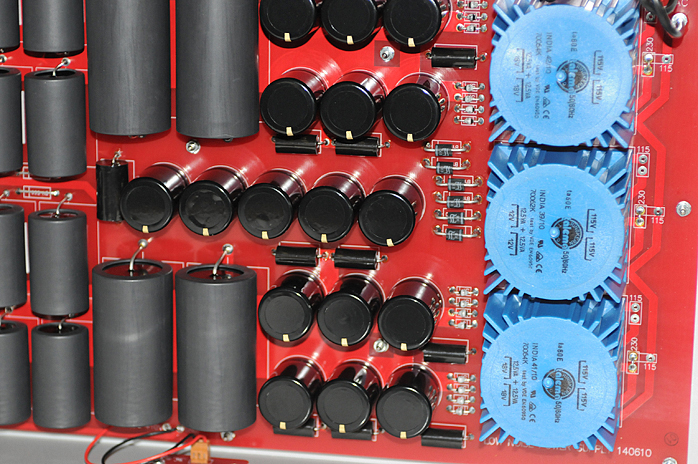 |
A few days later we had long speaker cable thanks to our friends at X-Fi poke through a hole in the upstairs floor. Connecting the speakers was easy. Now we had to run downstairs, cue up a CD and manipulate the volume until sounds of approval came down from the upstairs listener.
|
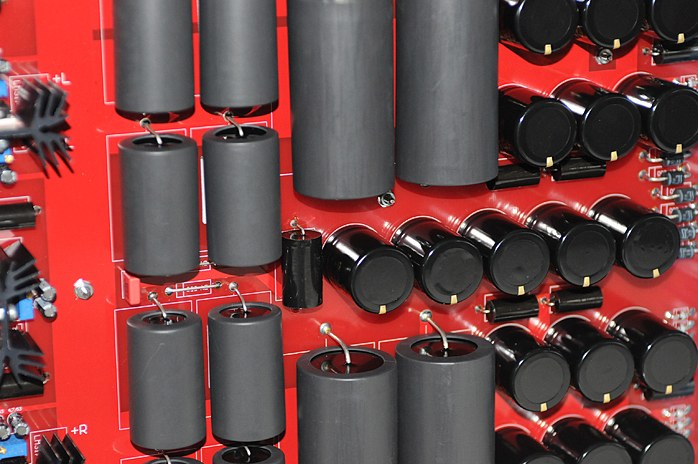 |
Of course this setup sounded different. A single-driver horn has a different flavor from a vented 3-way direct radiator. An 8-inch driver even when horn loaded does not have the same impact as a 12-inch woofer with port. Into this 16-ohm load the Grand Stereo had less power than 8 ohms but in practice there remained plenty. Plenty refers to stand-by reserves. Here we must admit to Franck that one really can never have enough power. The adage of a high-sensitivity loudspeaker being perfectly married to a flea-power amplifier only is a myth and poppycock. A well-designed muscle amp can be as delicate and revealing as a small SET. That’s one point checked off. Secondly—and this is a true forté of the ASI amp—the speed of a superior transistor amp does not stop at the speed of a fine SET with the best possible output transformers. We think this amp is faster than most. We have not had many other muscle transistor amps through our current system so we cannot compare speed first hand. But recalling previous listening sessions at Franck’s for instance, this Grand Stereo is faster.
|
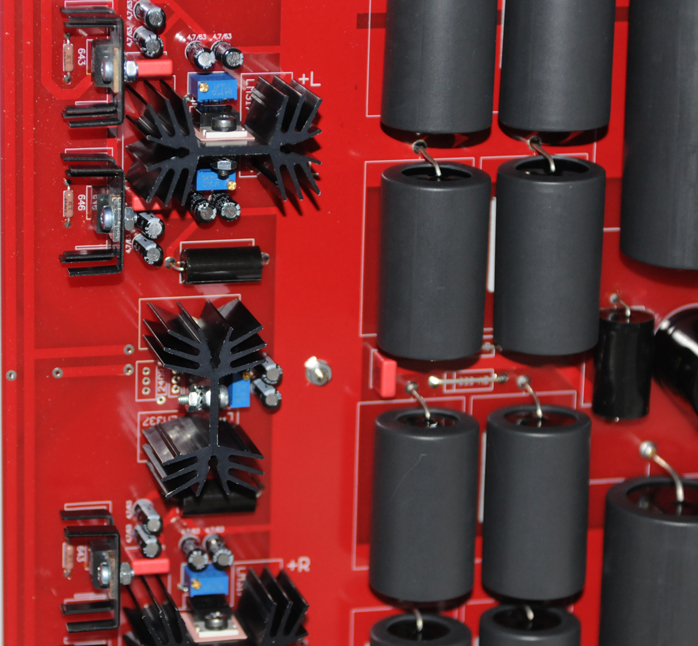 |
The ultimate test for any power amp is to eliminate the preamp of course. Some in fact think that the best preamp is no preamp. So we hooked the balanced outputs of the PS Audio PWD DAC directly to the Grand Stereo and started another round of auditions between the Aquarius and Pnoe speakers. We had been impressed by the speed of the pre/power amp combination but without the preamp something very special occurred. Of course there are situations when you need a preamplifier as when you play vinyl but with a volume-controlled DAC it’s not mandatory.
|
 |
|
|
|
|
 |
We segued into this article with the comparison of a live guitar and one reproduced from a recording. Now we had live guitars, cymbals, drums, violins and what not in the house. Leaving out the extra link or detour through the preamp made a day’n’night difference. With all the mastery, skills and efforts put into the LiveLine preamp, skipping it benefited our musical pleasure in this context.
One reminder is vital though. The source material of course should contain the essential dynamic range. We all know about the loudness wars and what harm that has caused to recorded dynamics. Fortunately there still are recordings that use a fair portion of the 96dB of dynamic range available in the 16-bit CD format. King of these and no doubt the benchmark is Touch by Maarten van der Veen as recorded by Eelco Grimm. Eelco used no limiters, compressors or whatever, just a little dithering when converting his 24-bit recording to 16-bit CD.
Played at our normal listening volume there was hardly any sound pressure - until Maarten hit one of his percussion instruments hard. Now that’s what dynamics are all on about. Other examples of wide dynamic range are German blues man Todo ‘Toscho’ Todorovic’s Oh Lord and Dutch saxophonist Yuri Honing’s Walking on the Moon version.
Directly feeding music into the Grand Stereo was so compellingly enveloping and sucked us in so much, it became almost eerie in its realism. Just imagine what the monos will be able to do. Scary thought that... |
|
|
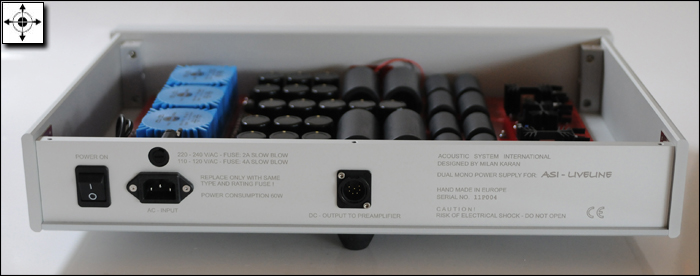 |
|
 |
Quality of packing: Outstanding in heavy padded wooden crates closed with plenty of screws.
Condition of component received: Excellent.
Quality of owner's manual: Brief and straight forward
Website comments: Basic and typical Franck.
Pricing: A lot of money for a lot of amplifier. If the electronics follow the other ASI products, your investment is safe as no second-hand products will be available.
Human interactions: Quick, friendly and to the point.
Remark: With the era of streaming and other computer-based sources here which offer their own means of attenuation, the Grand Stereo alone will serve most needs. |
|
|
 |
 |
|
 |
|